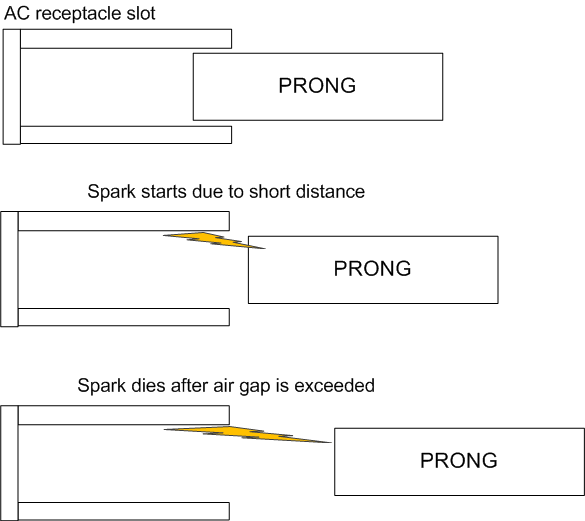Air can actually be made conductive with high enough voltage, which turns it into a plasma (which can conduct a lot more current than air). For this process to happen the air needs to reach a breakdown point, which occurs when a voltage and\or distance limit is reached. As you can see in the graph below the distance is fairly short as 120V or 220V will be on the mm scale.

Source: https://www.researchgate.net/publication/234058061_The_threat_caused_by_fires_under_high_voltage_lines/figures?lo=1
The sparking of AC receptacles happens when the air gap 'breakdown' reached, the air starts to conduct and you see the plasma (which always happens to some extent when plugging devices\loads that are 'on' in because there is always air between the plug and socket until they make contact, and the distance decreases while plugging, you may not see it every time)
If the device/load is off, you won't see a spark, so plug in\unplug devices while off (and it will be easier on the plugs, as a small amount of weilding occurs if 'hot plugging').
The sparking effect is also more likely to be seen when unplugging (while devices are on) for several reasons, one is the gap is short so breakdown always occurs. The other is that motors and other inductance in devices can also create a voltage while the device is being unplugged.

It's also possible that static could have accumulated in a device before plugging and this could create a spark while off, similarly to rubbing your feet on the floor and touching something metal.


